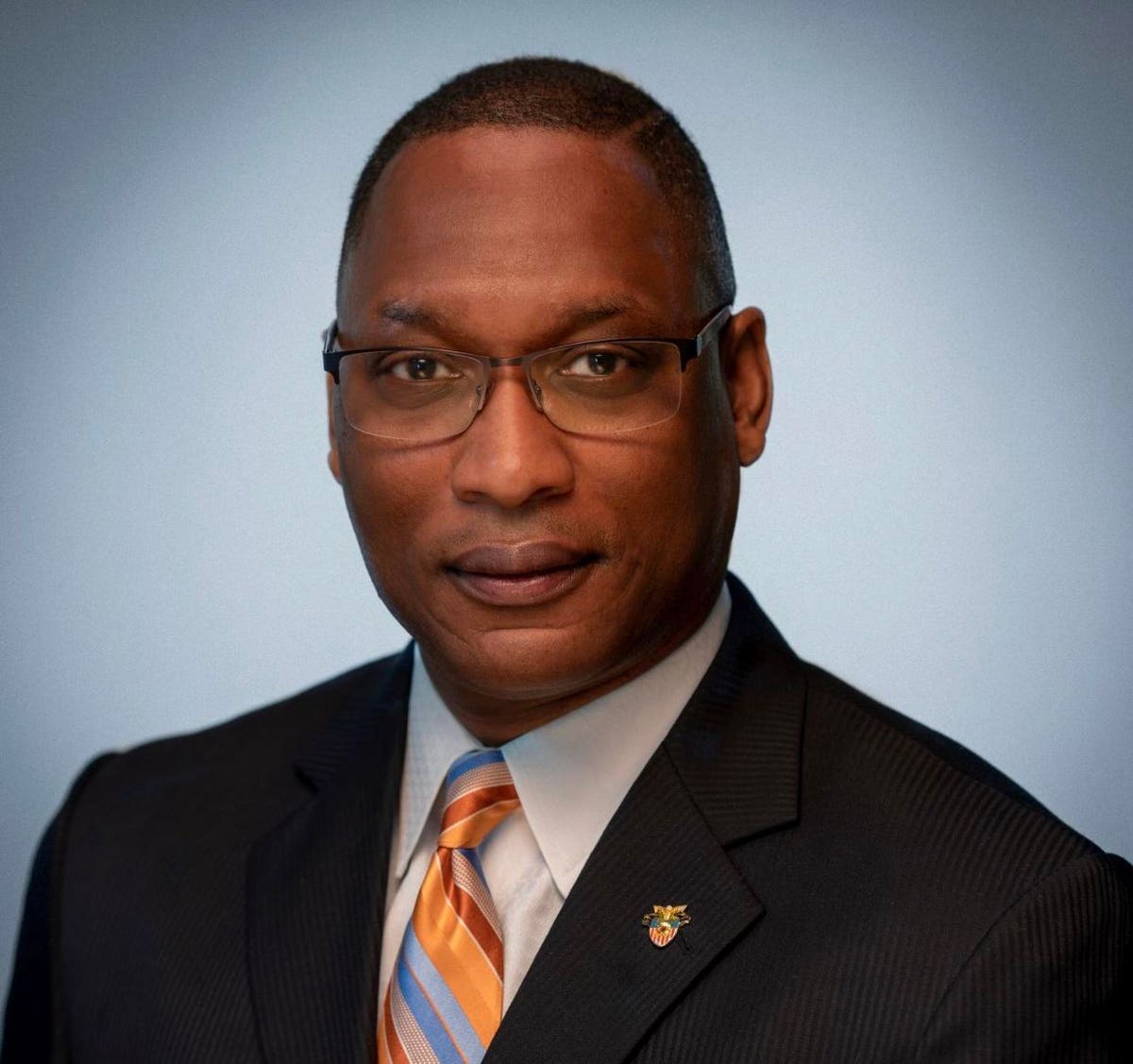Ron Steptoe, co-founder and CEO of Warrior Centric Health, can trace his family’s military service back to the founding of the United States. Not only are he and his wife West Point graduates, but he has a family legacy dating back to the Revolutionary War. Steptoe’s fifth great-grandfather was one of 5,000 African Americans to fight during the Revolutionary War, along with his son—including the decisive Battle of Yorktown.
For their service, James Bowser I and James Bowser II were awarded the nation’s first veterans benefit: 200 acres of land each in Nansemond County, Virginia. “This obviously set my family up in a very interesting way, especially for African Americans during that time frame and through the hundreds of years thereafter,” Steptoe says. When the Civil War broke out, a new generation served. “James Bowser IV was a free man running his business on that land. He had 10 kids, and he knew that his family’s freedom was in grave danger,” he says.
Bowser became a spy for the Union, working not far from the Confederate capital of Richmond. Horrifically, he was caught and executed, and his wife, Sarah, took over the business and raised the children on her own. “For almost 150 years, his name was never mentioned,” Steptoe says. It wasn’t until he started doing some research in 2013 that he discovered his ancestor was listed among Black spies of the Civil War.
Steptoe’s seven-generation legacy taught him the value of service, but that century and a half of silence imparted a different lesson. “I know what happens when you forget a family member and the impact of that legacy,” he says. “I want to make sure that people aren’t becoming sick or dying prematurely because 150 years of their history has been dismissed. My mission is to use these technologies to make sure there isn’t another 150 year gap.”
As leader of Pfizer’s multicultural business team, Steptoe came to understand the human suffering behind data that showed significant and persistent disparities in healthcare outcomes among socioeconomic and ethnic groups. While people were beginning to talk about and act on health equity and population-based health solutions, no one—neither business, nor government, nor not-for-profit—had shown much success in actually fixing the problem.
In 2008, Steptoe joined Dr. Evelyn Lewis, a retired Navy doctor and service-disabled veteran with 25 years of service, to find a way to improve the health outcomes of veterans. This large, diverse population had overlooked needs and could provide a reproducible model for other underserved populations. The idea was simple but groundbreaking: Provide healthcare facilities with the information they needed to recognize and treat conditions that were specific to or more prevalent within these populations.
The veteran community, it turns out, is an ideal test case for Warrior Centric’s service delivery model. First, it is a distinct population with a number of commonalities when it comes to health. Those who served around the same time were exposed to similar environmental factors, such as chemical agents. It is also highly diverse, encompassing people of color, women, geriatrics, members of the LGBTQ community, Latinos, and others. “If you can treat the veteran and military community, you can treat anybody and everybody in our country based on their different social demographics,” Steptoe says.
“I want to make sure that people aren’t becoming sick or dying prematurely because 150 years of their history has been dismissed.”
From the beginning, Steptoe decided that the most sustainable way to meet this important social need was via a for-profit model, which would also introduce efficiency into the cumbersome health system. “There’s absolutely inefficiency in this system now,” he notes. “If we take the military and veteran community and their families, it’s 75 million Americans, which is 25% of the U.S. population. If we’re able to bring even a half a percent of efficiency to that market by just doing some basic blocking and tackling, you’re looking at $1.5 billion in savings.”
How about your entrepreneurial dreams? Will you, as I like to say, build a great business and help the world? Share your thoughts in the comments!
In the meantime, sign up for our free How I Did It monthly video series, where you’ll hear Steptoe talk about transforming his idea into a high-growth company, along with interviews with other fascinating entrepreneurs.
Read the full article here





